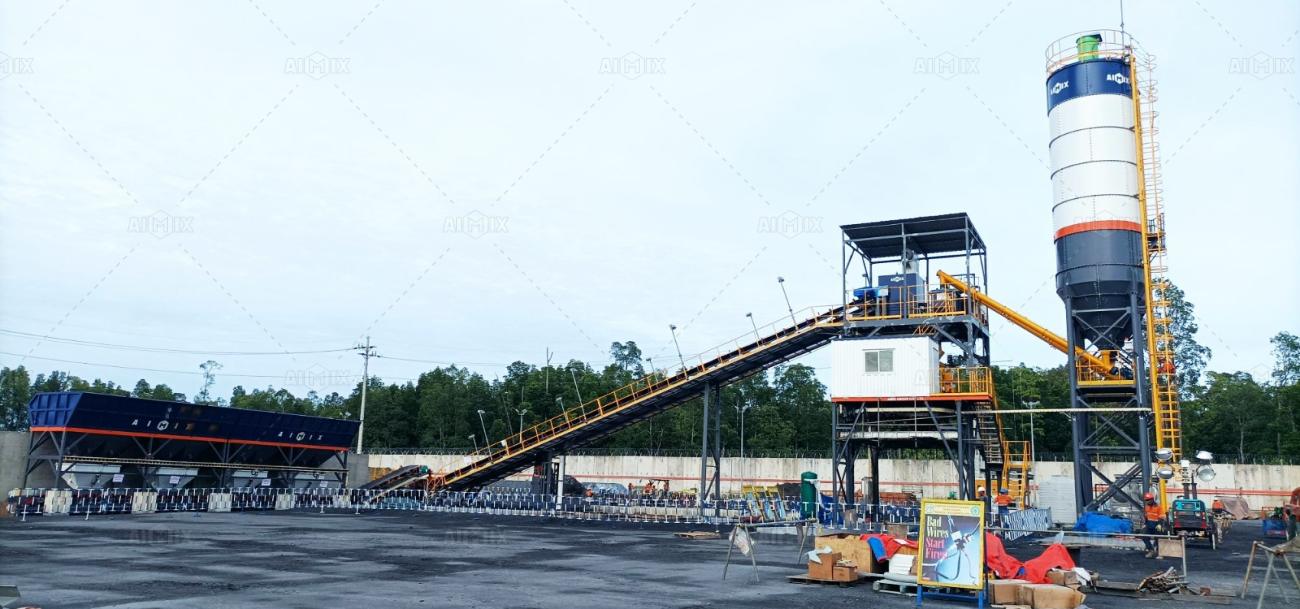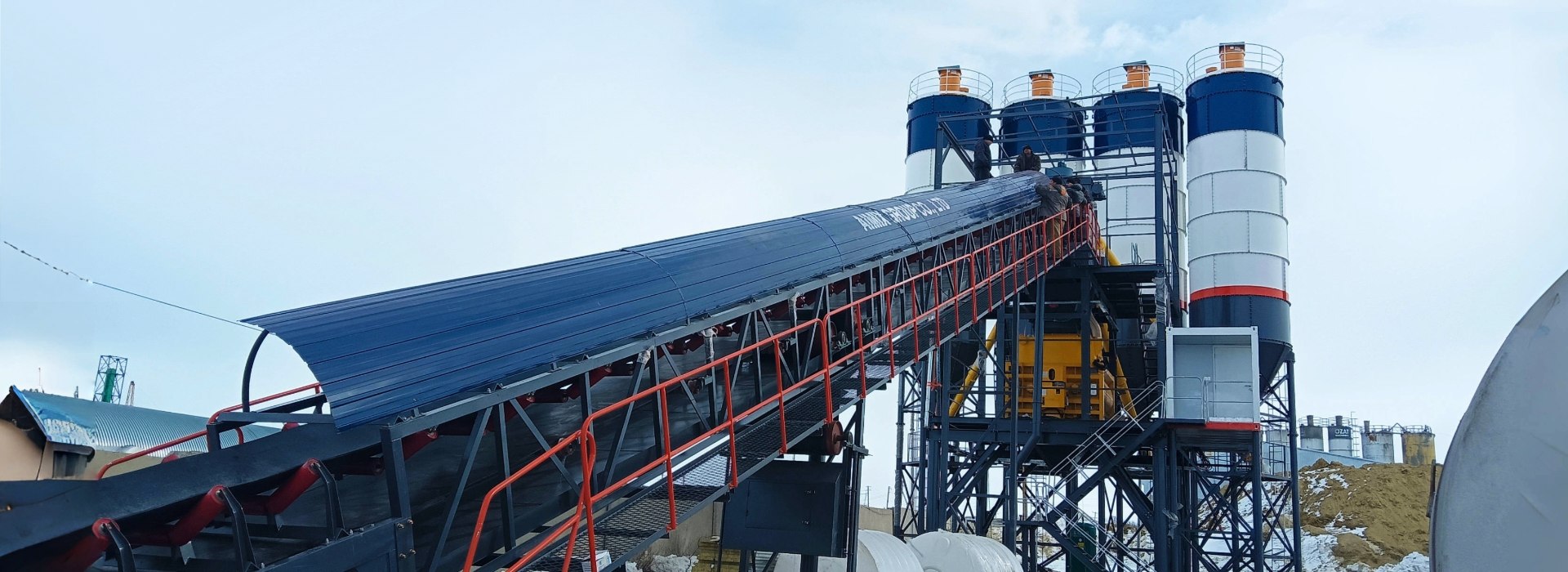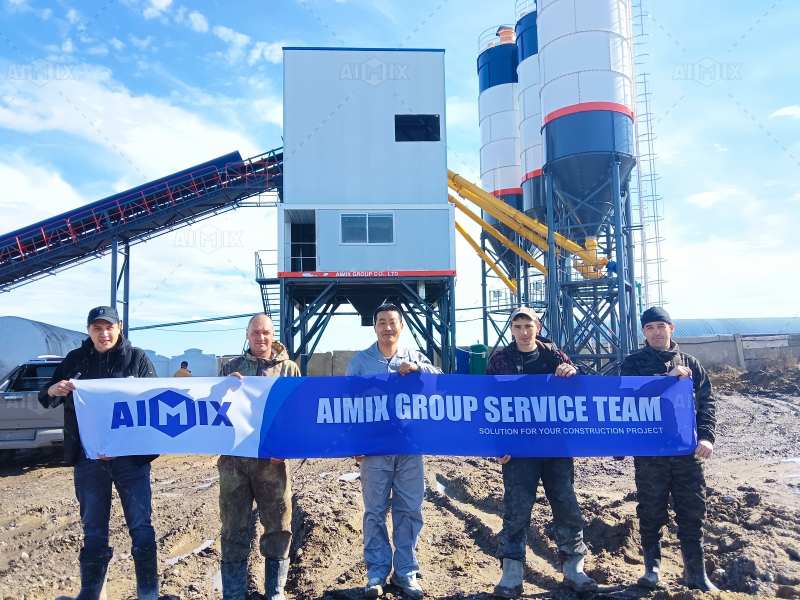In the competitive world of concrete production, plant efficiency is a crucial factor that can make or break profitability. Whether you’re running a stationary, mobile, or compact concrete batching plant, optimizing the plant layout is one of the most effective ways to enhance productivity, reduce operational costs, and improve concrete quality.
This article explores how proper batching plant layout design—covering equipment arrangement, material flow, safety, and automation—can significantly impact the performance and output of your concrete plant.

Why Layout Optimization Matters
The layout of a concrete batching plant isn’t just about fitting equipment into a space. It’s a strategic exercise in workflow management, logistics planning, and operational efficiency. A well-optimized layout:
Reduces material handling time and costs
Minimizes traffic congestion on site
Enhances safety and worker efficiency
Prevents production bottlenecks
Improves overall plant productivity and output
Whether you’re building a new plant or upgrading an existing one, thoughtful layout planning can yield significant returns.
Key Factors in Concrete Batching Plant Layout Design
1. Identify Plant Type and Site Conditions
Before diving into layout planning, define your plant type:
Stationary batching plant: Best suited for long-term, high-volume production on a fixed site
Mobile batching plant: Ideal for temporary jobsites or projects in remote areas
Compact or modular plant: Offers flexibility for limited space and fast relocation
Site conditions such as available land area, ground stability, accessibility, and proximity to the construction project will influence how you design your layout.
2. Optimize Material Flow and Storage Zones
The most critical component of batching plant layout is the material flow—from raw aggregate and cement storage to mixing and dispatch. To avoid material crossover and production delays:
Aggregate storage bins should be close to the feeding system. Use inclined conveyors or skip hoists to move materials efficiently.
Cement silos should be placed upwind to prevent dust dispersion and as close as possible to the weighing system.
Water tanks and additive tanks should be accessible but separated to avoid cross-contamination.
Use gravity-assisted flow wherever possible to reduce conveyor usage and energy consumption.
A U-shaped or L-shaped layout is often recommended for better directional flow and space efficiency.

3. Prioritize Truck Access and Traffic Management
An overlooked but essential part of batching plant layout is vehicular access. Concrete mixer trucks, cement tankers, and aggregate haulers must be able to enter, load, and exit quickly without disrupting operations.
Best practices include:
One-way traffic loops to reduce congestion
Clearly marked entry and exit points
Loading zones designed for at least two trucks simultaneously
Waiting areas outside the mixing zone to prevent bottlenecks
Proper traffic flow ensures consistent dispatch and timely delivery to the construction site.
4. Integrate Control Room and Operator Visibility
The control room should be positioned to give operators full visibility over the critical components—mixer, weigh belts, truck loading area. This enhances operational monitoring and safety response time.
Consider raised control cabins or central positions with glass windows and camera monitoring for large-scale plants. Make sure the control room is insulated, secure, and has uninterrupted power.
5. Enhance Safety and Compliance
Layout optimization isn’t just about output—it’s also about safety and environmental compliance. Incorporate:
Designated walkways and safety zones for workers
Dust suppression systems at aggregate storage and mixing areas
Spill containment zones around cement silos and chemical tanks
Emergency exits, fire extinguishers, and PPE stations
A plant that meets or exceeds safety standards will experience fewer shutdowns and accidents.
6. Plan for Maintenance Access
Equipment in a batching plant requires regular servicing. A layout that provides easy access to maintenance points—motors, belts, silos, and mixers—will reduce downtime and service costs.
Include service paths or platforms with safety rails, especially for elevated equipment like cement silos and control panels.
7. Leverage Automation and Digital Systems
Modern concrete batching plants use SCADA systems, PLC-based control panels, and IoT sensors to streamline operations. When planning your layout:
Ensure wiring and networking can be easily routed between systems
Provide secure and weather-resistant housing for electronics
Position automation hubs near operator stations for real-time access
This integration boosts precision in weighing, mixing, and monitoring—leading to consistent concrete quality and reduced waste.
Case Example: Efficient Layout in a Coastal Project
In a recent coastal highway project in Southeast Asia, a contractor deployed an Aimix mobile batching plant near the shoreline. Due to space constraints and harsh marine conditions, layout planning focused on compact arrangement, corrosion-resistant components, and fast truck circulation.
The plant was arranged in a straight-line layout: raw material bins → mixer → truck bay, with control room elevated for sea-view monitoring. This smart layout helped maximize output during the limited “safe tide” working windows—resulting in a 25% increase in daily concrete delivery compared to the previous site.

Final Tips for Layout Optimization
Conduct a site study before installation
Use 3D modeling or BIM software to visualize layout options
Engage with experienced plant engineers or concrete plant manufacturers like Aimix for design support
Allow space for future upgrades or expansion (e.g., adding silos or mixers)
Conclusion
Optimizing the layout of your concrete batching plant is one of the smartest investments you can make. A well-planned setup improves material flow, enhances safety, reduces costs, and boosts output—key factors for staying competitive in today’s fast-paced construction market.
Whether you’re setting up a new plant or improving an existing one, take the time to plan carefully, use modern tools, and consult with experts. The result will be a high-performing batching plant that delivers consistent concrete, faster production cycles, and higher profits.
